Welcome, reader, to our Safe Finder “Virus” removal guide. The following instructions will aid you in removing the unwanted software from your PC.
You have recently been bothered by one particular problem – the Safe Finder “Virus” . This article was written with the single purpose to answer all your questions about this type of program. We will discuss everything that characterizes it as well as some efficient removal instructions. Also, we have prepared a set of prevention tips to help you avoid this kind of software once you have managed to deal with the current infection with it.
All about Safe Finder
Safe Finder belongs to the category of browser hijackers. This means that this program is perfectly capable of performing some changes to your browser. As you may have guessed from their alias, such programs usually change some of your browser’s settings. These changes may result in the appearance of many pop-ups, banner, tab and other kinds of online ads. Also, the changes in the settings may make your browser redirect you to different places online, some of which have a bad reputation and could even contain Ransomware – the worst possible malware. Another result from your new browser settings may be the change in your default homepage. These are the potential effects Safe Finder could have on your PC. There are some more probable activities this hijacker might perform, like actual research on your personal tastes based on your recent browsing requests. As a result, the ad campaign that will be showering your browser may only include ads that match these recent requests.
Does the infection with Safe Finder equal a virus infection?
Actually, Safe Finder represents a relatively harmless software product, whose only negative effect may be the fact that it could irritate you a lot. The normal types of malware that we know are focused on malicious activities such as destruction of data, encryption of data, blackmailing users, etc. Viruses are even capable of spying on you and recording you with your own web camera. Some of them might crash your entire PC. On the contrary, browser hijackers cannot do any of these. They are only specialized in promoting software, services, products and even homepages, but nothing else that could be regarded as evil.
How does such an infection with a hijacker take place, though?
Actually, browser hijackers might be found practically everywhere on the web. They are of the most widespread software in general. You may catch the Safe Finder “Virus” from a torrent, from a shareware website, by opening a suspicious email or any email attachment. You can even get it from documents and web pages that you simply visit. Still, you are most likely to get contaminated if you download and install a free software bundle. This is a combo of software products such as hijackers, Adware and others. Developers create more and more such bundles because every single displayed ad that comes from the ad-producing software there brings more and more money to their bank accounts. Vendors truly believe that the more advertisements of a product or a service you are exposed to, the bigger the chance is to purchase the promoted goods. However, some users who get to personally know such ad-generating programs, most usually consider them unwanted or highly annoying.
The most important aspect of getting infected with the Safe Finder “Virus” that you should be aware of is the way this program actually infiltrates your system. Because you are the one who needs to let it in and most often it happens due to your carelessness or naiveté. Whether your PC will get contaminated or not thoroughly depends on the way you are used to installing software on it. For instance, if you habitually choose the installation shortcuts by going with options like “Quick”, “Typical” or “Default”, you are more likely to end up infected because you just don’t get all the details about the given bundle. On the contrary, if you complete the installation process using the more time-consuming features of the wizard such as the “Advanced” or the “Customized” ones, you will have the chance to know about the bundle you are installing and also to choose exactly what you want from all of the programs there.
Can a future infection be prevented?
Of course, you can successfully avoid any other infection with this program in the future. For this purpose you need to pay attention to the method you use to install program bundles. Another important aspect is the anti-virus program that you have. It is necessary that it is installed properly and updated regularly. A Firewall and a nice pop-up blocker could also be helpful. Of course, you should be careful with the online addresses you go to, as well, as they may contain all kinds of cyber threats.
Our removal guide
Our removal guide below will help you clean Safe Finder from your computer. We hope that you will review the uninstallation instructions carefully and you will be able to get rid of this issue.
SUMMARY:
| Name | Safe Finder |
| Type | Adware/Browser Hijacker |
| Danger Level | Medium (nowhere near threats like Ransomware, but still a security risk) |
| Symptoms | Annoying ads may compromise your browser’s behavior. It might begin to redirect your search requests to unfamiliar pages. |
| Distribution Method | In program bundles mostly, but also through spam emails, infected torents and other hijackers. |
Safe Finder Removal
I – Uninstallation
- Use the Winkey+R keyboard combination, write Control Panel in the search field and hit enter.

- Go to Uninstall a program under Programs.

- Seek the unwanted software, select it and then click on Uninstall
- If you are unable to spot Safe Finder, search for any unrecognized programs that you do not remember installing on your PC – the unwanted software might disguise itself by going under a different name.
II – Safe mode and revealing hidden files
III – Cleaning all your browsers
- Go to your browser’s icon, right-click on it and select Properties.

- Go to the Shortcut tab and in the Target make sure to delete anything written after “.exe”.

- Now, open your browser and follow the instructions below depending on whether you are using Chrome, Mozilla or IE.
- Chrome users:
- Go to your browser’s main menu located in the top-right corner of the screen and select Settings.
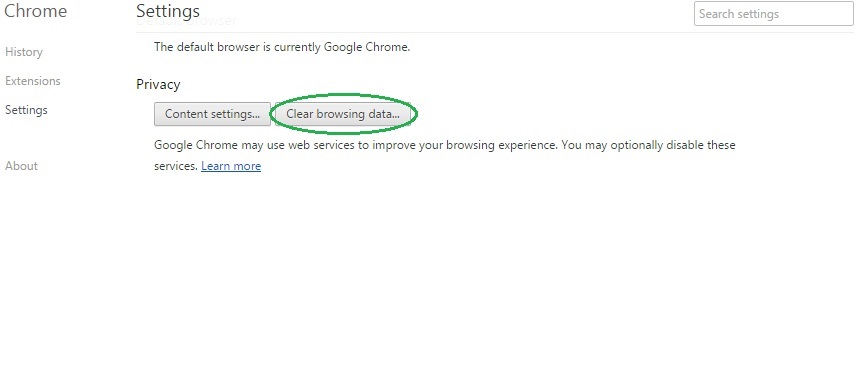
- Scroll down, click on Show Advanced Settings and then select Clear browsing data. Just to be sure, tick everything and clear the data.
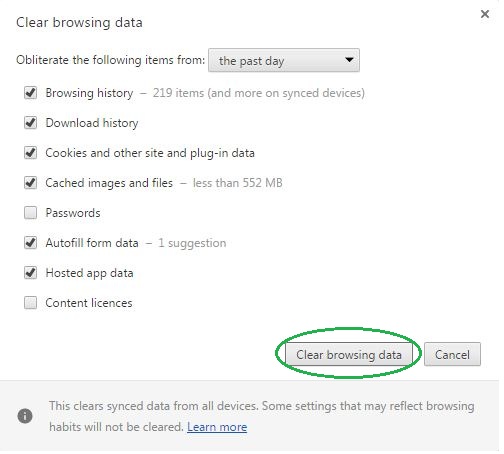
- Now, in the left pane, go to Extensions and look through all extensions that are integrated within your browser. If you notice any suspicious add-on, disable it and then remove it.
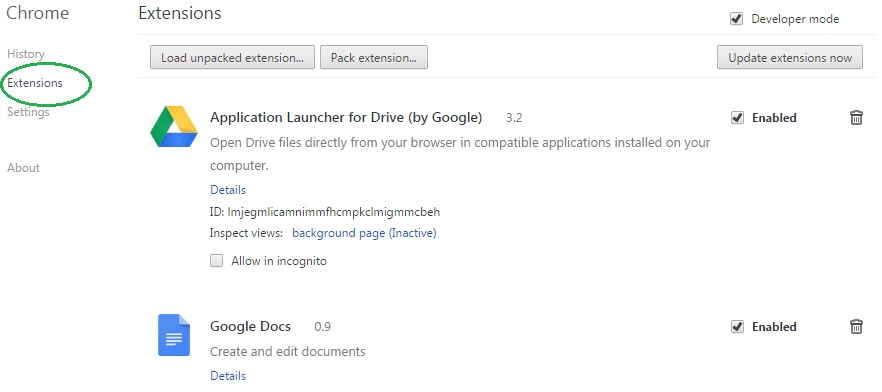
- Firefox users:
- Similarly to Chrome, go to the main menu and select Add-ons and then Extensions.
- Remove any suspicious browser extensions that you may have even if they do not have the name Safe Finder on them.
- IE users:
- Go to Tools and select Manage add-ons.

- Click on all add-on types from the left pane and check if there is anything suspicious in the right panel. In case you find anything shade, make sure to remove it.
IV – Removing Shady processes
- Go to your start menu, type Task Manager in the search field and from the results open View running processes with Task Manager.

- Thoroughly look through all processes. The name Safe Finder might not be there, but if you notice any shady looking process that consumes high amounts of memory it might be ran by the unwanted program.
- If you spot the process ran by Safe Finder, right-click on it, open its file location and delete everything in there. Then go back to the Task Manager and end the process.

V – DNS check
- In the start menu search box write View Network Connections and open the first result.
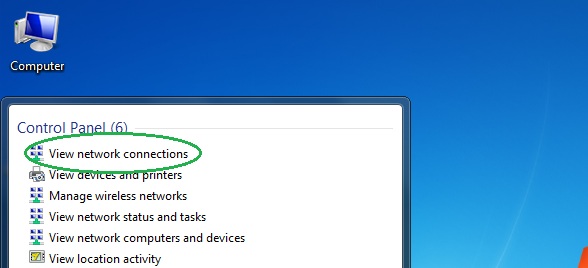
- Right-click on the network connection you are using and go to Properties.

- Select Internet Protocol Version (TCP/IPv4) and click on Properties.

- If Obtain DNS server addresses automatically is not checked, check it.
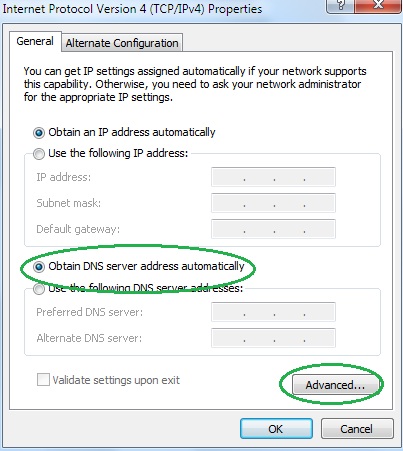
- Go to Advanced and select the DNS If there is anything in the DNS server addresses field, remove it and click OK.

- Click OK on the rest of the opened windows.





Leave a Reply